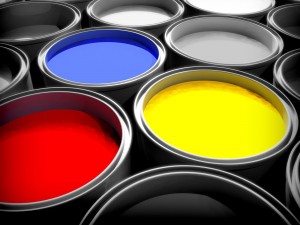Steps to Spot Quality Paint

Paint is one of the influential factor to home decorations or any other decorations. They act as a base to any creative instrument that one needs to make a home, building or any space beautiful. Proper painting helps elevate the look of a place.
The type of paint determines the feel and look the house gives and also how and what they portray to the outside world, because painting and colors have their own language. The determine what others say about the house, what your tastes are and how you live in general. There is nothing like a perfect paint, for example; one that sticks on anything and covers up in one coat. This “perfect” paint last for decades, it never fades, it doesn’t drip, it appears smoothly when applied, it is very strong. It also prevents the development of mildew growth on it, and all the characteristics of a perfect paint we carry in our head. However there are paints that are close to perfection, they perform most of the task at hand and they can be divided in two 2 groups; high quality paint and low quality. To identify the difference between this for the decorating of your home, here are these few guidelines on choosing the right paint;
Instructions
-
1
Cost
Quality paints are pricey. They do not fall in the category of low quality paint even if they are of the same company or color. However there are some low quality paint that are so alike and can be difficult to differentiate one from a quality product, plus the price of a cheap quality paint can be almost the same as a high quality paint, therefore causing the need to not only bank on price alone but on this other factors as you read on. -
2
Gleam
One of the qualities of quality paint is the level of shine in the paint. Does it have that beautiful sheen, thick like, creamy and smooth texture, if these aren’t present then there is a possibility you are looking at a fake. The higher it is in its glossy content, the better the overall look as this will help cover up stains, and other problems that might arise from the walls in your home. -
3
Test Paint
Another way to be certain about the quality product of the paint you want to buy is to test them in your home. Today technology offer digital influence by reflecting the color of paint in your house and seeing how they look like. Also another technique is to buy sample sizes or quart size paint and paint the different shades in a small or sizeable corner your home and see how they appear in different light conditions. -
4
Pigments
This is the primary component of the paint as this is the main color of the paint you are purchasing. Its properties are finely grounded powder that does not dissolve and is suspended in the paint content. There are two types of these pigment, one is of a higher quality than the other.
Prime Pigment-This is the paint with the primary pigment and it is of high quality. When tested, it hides all abrasions and stains on the wall.
Extender pigment- This is the lesser quality; they are less expensive than prime colored pigments. When tested on the wall, it is light and doesn’t hide the stains or imperfections on the wall. They are normally made from clay, talc etc.
-
5
Binder
This is the film forming component in the paint. The binder consists of resins, polyesters, oils acrylics and polyurethanes which serve as a factor for paint drying and how it should look for example; As a wet paint is put on the wall, the binder helps in controlling how the paint dries, as the water component of the paint leaves, the binders then forms a solid film layer on top of the paint. Binders help protect the wall from any kind of imperfection that might affect the wall, as water can be used to cleanse the wall without any damage, but on a less quality paint, water might ruin the paint is binder is weak. A quality paint will have a strong binder and will help prevent any damage, a less quality paint won’t stand as much resistance. -
6
Resin
This is also known as the “water” in the paint, because of how it performs when turned or applied on the wall. The main purpose of the resin is to regulate the thickness of the paint. Water compared to honey has a low density, which leads to this fact in paint that the less thickness in the paint, the easier it spreads on the wall. To every consumer, that might sound pleasing to the ears, but the paint layers won’t cover all the mistakes on the wall and would require two or three layers of paints to cover up well. The lower the thickness the more areas the paints will cover, which will result in purchasing more (expenses) and there is a possibility that after painting the imperfections might still be seen, if not all. So another factor to note for is to check the thickness of the paint when testing, as that would make a whole difference between you and your energy and your pocket.
-
7
Additives
This is “the secret agent in the paint”, as it helps it achieves it goals, according to the quality of paint you purchase. Some additives improve the spread of the paint when applied, how it is suppose to look when it is done, it also helps to protect the paint from UV protection from the sun, preventing the paint from fading. It helps to fight bacteria growth from the paint when they are applied in moist areas. The higher the additives, the higher the quality of the paint which in turn makes it more expensive than less quality paints.


